| |
|
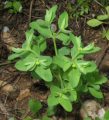 | |
| MaltaWildPlants.com by Stephen Mifsud |

|
| |
|
|
 |  |  |  |
| External Links: |
|
Drimia pancration (Sea Squill) |
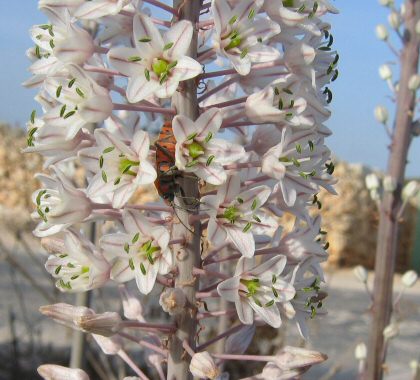
Drimia pancration (ASPARAGACEAE.)
Images for this profile are taken from the Maltese Islands after year 2000. |
|
| Nomenclature |
Species name : | Drimia pancration (Steinh.) J.C.Manning & Goldblatt | Authority : | Adolphe Steinheil, France, (1810 - 1839) ;
Pierre Alyon Phillipe, France, (1746 - 1816) | Synonyms :
(basionym or principal syn.) |
Uriginea maritima
(Steinh.) Baker
Synonym that was used for long in Malta:
Urginea pancration
(Steinheil) Phillippe
Full list of synonyms :
[Euro+Med]
[PlantList]
[IPNI]
[POWO]
[Catalogue of Life]
[Worldplants.de]
|
Plant Family : | Asparagaceae Juss. (= Liliaceae )
(Asparagus Family) | English name(s) : | Sea Squill, Sea Onion, White Squill | Maltese name(s) : | Basal tal-għansar, Għansar | Status for Malta : | Indigenous. Present on the Maltese islands before man | Name Derivation : |
Drimia: 1 = From the name of an Algerian tribe Ben (or Beni) Urgin (Latin). The most used synonym of this plant is Scilla maritima where Scilla is the Latin name for squill. Scilla may also come from the Greek for injure, disturb or excite since of its harmful effects on the stomach and other body parts (Latin).
pancration: Related or resembles the genus Pancratium which in turn is derived from the Greek word meaning All-potent (mighty) as used by Dioscorides (40 - 90 AD). (Greek origin ); 2 = Related to the genus Pancratium which in turn is derived from the greek All-potent as used by Dioscorides. (Greek).
| Remarks : | |
|
| Morphology and structure |
PLANT STRUCTURE: |
Character | Growth Form | Branching | Surface |
Description | | | |
General
Picture |  | 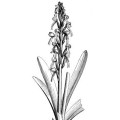 | 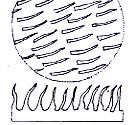 |
|
LEAVES: |
Character | Arrangement | Attachment | Venation |
Description | | | |
General
Picture | 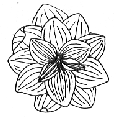 | 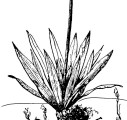 |  |
| |
Character | Leaf Shape | Leaf Margin | Remarks |
Description | | | |
General
Picture | 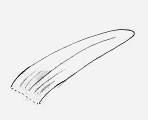 |  |  |
|
FLOWERS: |
Character | Colour | Basic Flower Type | No. of Petals | No. of Sepals |
Description | White | | 6 To be botanically precise, the flower has 3 sepals (outer whorl) and 3 petals (inner whorl) which are identical, and so they are collectively referred to as 6 tepals or perianth segments. | 0 |
General
Picture | | 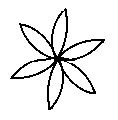 |  |  |
| |
Character | Inflorescence | Description | Ovary | Stamens |
Description | | The flower is made up of 6 wax-white petals with a central wine stripe arranged symmetrically in the form of a star. There are 6 erect stamens and a single pistil coming from a superior green roundish ovary. | | |
General
Picture |  |  | 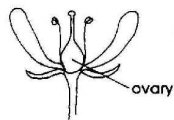 | 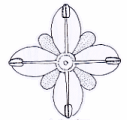 |
| |
Character | Scent | Average Flower Size | Pollen Colour | Other Notes |
Description | Yes Flowers have faint sweet smell, often undetected in windy days. | 12-15mm | Green-Yellow | - |
|
SEEDS: |
Character | No. Per Fruit | Shape | Size | Colour |
Description | 22-28 | Flattened and ovoid. Irregularly shaped but more or less oval and flattened, resembling an insect wing. | 5mm | Black |
General
Picture |  |  |  |  |
|
FRUIT AND OTHER BOTANICAL DATA: |
Character | Fruit Type | Colour of Fruit | Subterranean Parts | Other Notes |
Description | | Green Turns beige when ripe and dry. | | - |
General
Picture | 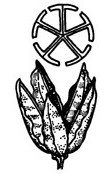 |  |  |  |
|
|
| Plant description and characters | |
Life Cycle: | Perennial. |
Growth Form: | GEOPHYTE (bearing underground bulbs, rhizomes, stolons, etc.) |
Habitat: | Garigue (disturbed), steppe, cliff tops, valley sides and rocky places. Rather common in several habitats |
Frequency: | Common |
Localities in Malta: | Very Common in almost all coastal garigues throughout the Maltese Islands. Few examples include Dingli Cliffs, Siggiewi, Xaghra l-Hamra (Ghajn Tuffieha), Mistra, Delimara and Mtahleb. Similarly common in Gozo. |
Plant Height: | 80-180cm. |
| Aug-Oct |
Protection in Malta: | Protected by law: Schedule VIII of [S.L. 549.44] (Exploitation subject to management measures) |
Red List 1989: | Threatened status for the Maltese Islands and has been listed in the Red Data Book (1st ed.) |
Poison: | |
This perennial monocotyledon grows from large bulbs (10-15cm in diameter), which are buried either just under ground level or more often, with their upper part being above soil level. It has a strange life cycle because its vegetative and reproductive part come during different periods of the year. It starts producing a cluster of large leaves in late Autumn which remain until the end of Spring. In the hot and dry months of May and June the leaves dry up, and in August the bulbs shoot up a tall flowering stem which flowers from the end of August till the end of September. Thus the leaves and the flowers are never seen together.
Numerous leaves grow in clusters directly from the whitish (or sometimes reddish-brown) bulb. The leaves are very large, reaching a length of 30-60cm and a width of 3-6cm. They are dark green in colour, strap-shaped and slightly undulated. They are glabrous, have a smooth margin, and often shiny.
The leafless flowering stem can reach a height of 150cm, but height varies considerably, the average being around 100cm. It has a grayish lilac colour and produces large quantities of buds and flowers in a tall conical spike-like raceme. The white and wine striped, bullet shaped buds at the base of the flowering stem are the ones to blossom first. Blossoming progresses gradually up the stem till the apex. Each flower is attached by a 15mm long stalklet which has a lilac colour. These staklets result in an inflorescence that is described as a raceme rather than a spike.
The star shaped flower is made up of 6 spread-out, wax-white petals with a central wine stripe, 6 erect stamens and a central pistil coming from a superior green ovary. The stamens consist of a thick, firm, white filament (10mm long) and a dark green anther with a touch of yellow-green pollen. No true sepals.
When the flower expires, the petals do not fall but instead they close up again and resume a cylindrical structure more or less similar to the buds. This makes the flowering raceme more interesting, as a tall cone of white 'buds' with the band of flowers somewhere in the center. The closed petals protect the developing ovary which grows into a green fruit capsule. The fruit develops into an oblong dehiscent capsule with 3 longitudinal swellings. When ripe, the fruit turn into a straw colour and split open in 3 parts so as to release its black winged seeds inside. There are about 25 seeds per capsule which measure 5mm in length and as a result of their flattened and light structure, they can be carried away by the wind to a considerable distance.
|
|
| Information, uses and other details |
The information below refers to the very closely related plant Urginea maritima (= Scilla maritima, Drimia maritima):
Nativity
This plant is Native to :
Northern Africa: Eg: Algeria [n.] ; Libya [n.] ; Morocco; Tunisia
Western Asia: Eg: Cyprus; Egypt - Sinai; Israel; Jordan; Lebanon; Syria; Turkey
Southeastern Europe: Eg: Albania; Greece [incl. Crete] ; Italy [incl. Sardinia, Sicily] ; Yugoslavia
Southwestern Europe: Eg: France [incl. Corsica] ; Spain, Canary Islands, Portugal [WWW-26]
Many documents states that it has been originated from the Mediterranean area [WWW-77, 273, 274]
Habitat
The Squill is found in dry, sandy places, especially the seacoast in most of the Mediterranean districts, being abundant in southern Spain, where it is by no means confined to the coast, and is found in Portugal, Morocco, Algeria, Corsica, southern France, Italy, Malta, Dalmatia, Greece, Syria and Asia Minor. In Sicily, where it grows most abundantly, it ascends to an elevation of 3,000 feet. Its range also includes the Canary Islands and the Cape of Good Hope. It is often grown under fig trees in the Italian Riviera, and is grown in many botanical gardens, having first been recorded as cultivated in England in 1648, in the Oxford Botanic Gardens. [WWW-03]
Cultivation Details
Succeeds in ordinary garden soil according to one report [1] , whilst another says that it requires a very free draining gritty or sandy soil in full sun [200] . The bulbs have a summer resting period and should be kept dry at this time [188] . Some protection from winter wet is strongly recommended [200] . Easily grown in a warm sunny position [90] .
A very ornamental plant, it is not very hardy in Britain according to one report [1] , whilst another says that it can be grown in N. European gardens [200] though it does not flower very freely there [90, 200] . Another report says that the plant can tolerate temperatures down to about -7°C [238] . The bulb should be only partially buried [200] .
This species is cultivated in the Mediterranean area for its use in the drug industry [238] . The bulbs are harvested after 6 years growth with a yield of about 25,000 bulbs per hectare [238] .
There are two main forms of this species, one has a white bulb and the other has a red one. The red bulb is the form that is used as a rat poison whilst the white bulb is used as a cardiotonic. Another report says that herbalists do not distinguish between the two forms [4] . Only the red form contains the rat poison 'scilliroside', though both forms can be used medicinally [238] .
The bulb is very tenacious of life, one specimen that had been stored for 20 years in a museum was found to be trying to grow [4] .
Propagation
Seed is best sown as soon as it is ripe in a greenhouse [188] . Sow the seed thinly so that the seedlings can be left in the pot for their first growing season. Give them regular liquid feeds when in active growth to ensure that they do not suffer nutrient deficiency. Divide the young bulbs once the plant becomes dormant, placing 2- 3 bulbs in each put. Grow them on for at least another year in pots and plant them out into their permanent positions when they are dormant.
Division of offsets in late summer when the bulb is dormant [188, 238] . Larger bulbs can be replanted immediately into their permanent positions. It is probably best to pot up smaller bulbs and grow them on in a greenhouse for a year before planting them out when they are dormant in late summer.
Constituents
Squill contains cardiac glycosides (0.15 - 2.4% bufadienolides, including scillaren A), flavonoids, anthocyanidins, and mucilage. The cardiac glycosides are strongly diuretic and relatively quick-acting. They do not have the same cumulative effect as those in foxglove. [WWW-71]
The following list of constituents have been reported to be found in the bulb of the plant. The concentration of some is given in part per million (ppm). [WWW-66]
- CHELIDONIC-ACID (bulb)
- CYANIDIN-3-CAFFEOYL-GLUCOSIDE (bulb)
- CYANIDIN-3-GLUCOSIDE (bulb)
- DIHYDROQUERCETIN (bulb)
- DIHYDROQUERCETIN-4'-MONOGLUCOSIDE (bulb)
- GALLIC-ACID (bulb)
- GLUCOSCILLAREN-A Bulb 500 ppm;
- GLUCOSCILLIPHAEOSIDE (bulb)
- GLUCOSINISTRIN (bulb)
- ISORHAMNETIN (bulb)
- KAEMPFEROL-3-0-GLUCOSIDE (bulb)
- KAEMPFEROL-3-TRIGLUCOSIDE (bulb)
- KAEMPFEROL-7-GLUCOSIDE (bulb)
- KAEMPFEROL-7-GLUCOSIDE-3-DIGLUCOSIDE (bulb)
- KAEMPFEROL-7-GLUCOSIDE-3-RHAMNOGLUCOSIDE (bulb)
- KAEMPFEROL-7-GLUCOSIDE-3-TRIGLUCOSIDE (bulb)
- KAEMPFEROL-7-RHAMNOSIDE-3-RHAMNOGLUCOSIDE (bulb)
- LEUCOCYANIDIN (bulb)
- P-COUMARIC-ACID (bulb)
- PELARGONIDIN-MONOGLUCOSIDE (bulb)
- PHYTOSTEROLS (bulb)
- PROSCILLARIDIN-A Bulb 500 ppm;
- QUERCETIN (bulb)
- QUERCETIN-3-MONOGLUCOSIDE (bulb)
- QUERCITRIN (bulb)
- SCILLAREN-A Bulb 6,000 ppm;
- SCILLARENIN-A (bulb)
- SCILLARENIN-BETA-D-GLUCOSIDE (bulb)
- SCILLARIDIN-A (bulb)
- SCILLAZUROSIDE (bulb) 100 ppm;
- SCILLICOELOSIDE (bulb) 250 ppm;
- SCILLICYANOSIDE (bulb) 500 ppm;
- SCILLIGLAUCOSIDE (bulb) 700 ppm;
- SCILLIKRYPTOSIDE (bulb)
- SCILLIN (bulb)
- SCILLIPHAEOSIDE Bulb 400 ppm;
- SCILLIPICRIN (bulb)
- SCILLIROSIDE (bulb)
- SCILLIROSIDINE (bulb)
- SCILLIRUBROSIDE (bulb)
- SCILLIRUBROSIDINE (bulb)
- SCILLITOXIN (bulb)
- SINISTRIN (bulb)
- TAXIFOLIN (bulb)
The activity , if any, of following constituents is given below [WWW-66] :
- GLUCOSCILLAREN-A (500 ppm) - No activity reported.
- PROSCILLARIDIN-A - Anticarcinomic (Dosage: ED50=0.26 ppt); Antiflu; Antiviral; Cardiotonic (Dosage: 0.5-2.5 mg/man/day)
- SCILLAREN-A - Anticarcinomic (Dosage: ED50=12 ppb); Cardioactive
- SCILLAZUROSIDE - Cardiac
- SCILLICOELOSIDE - Cardiac
- SCILLIGLAUCOSIDE - Cardiac
- SCILLICYANOSIDE - Cardiac
History
The Medicinal Squill was valued as a medicine in early classic times and has ever since been employed by physicians, being official in all pharmacopoeias. Oxymel of Squill, used for coughs, was invented by Pythagoras, who lived in the sixth century before Christ. [WWW-03]
It is mentioned by Theophrastus in the third century before Christ, and was known to all the ancient Greek physicians. Epimenides, a Greek, is said to have made much use of it, from which circumstance we find it called Epimenidea. [WWW-03]
It is considered to be the Sea Onion referred to by Homer. Pliny was acquainted with it, and Dioscorides, who lived about the same time, describes the different varieties of the bulb and the method of making vinegar of Squills. A similar preparation, as well as compounds of Squill with honey, was administered by the Arabian physicians of the Middle Ages, who introduced the drug into European medicine, these preparations still remaining in use. [WWW-03]
The mediaeval reputation of Squill was originally as a diuretic, the older authorities attributing its diuretic action to a direct stimulant effect upon the kidney. [WWW-03]
Ancient Egyptian, Greek, and Arab physicians knew the bulb as the source of an expectorant, diuretic, and cough remedy, and knew that large doses were a strong emetic, causing severe vomiting. The ancients may also have known of the squill's most important medicinal property-its ability to stimulate heart activity. The bulb was certainly treasured for this purpose in later centuries by the doctors of Europe at least, until its function was taken over by the more effective digitalis. In 1923 the hidden cardiac stimulus was finally isolated; it turned out to be a crystalline chemical called scillaren A. In combination with another less pure chemical called scillaren B, it is the basis of the modern drug. [WWW-71]
Medicinal Uses
| Antidandruff |
Acts against dandruff, the loose scales shed from the scalp of the head [WWW-32 ] |
| Cardiotonic, Cardiac stimulant |
Exciting action in the heart, through the medium of the stomach; cordial; stimulant [WWW-32 ] |
| Against Dropsy |
An unnatural collection of serous fluid in any serous cavity of the body, or in the subcutaneous cellular tissue. [WWW-57] |
| Diuretic |
Tending to increase the secretion and discharge of urine. [WWW-32] |
| Emetic |
An agent that causes vomiting, so as the stomach is emptied from its contents. [WWW-57] |
| Expectorant |
Used to induce the ejection of mucus, phlegm, and other fluids from the lungs and air passages by coughing or spitting. [WWW-32] |
Some other activities and properties of the extracts of the plant's bulb are: Bronchitis, antiCancer, AntiCatarrh, Ecbolic, Insecticide; Raticide; Insect Repellant, Rheumatism, Rubefacient, AntiTumor, Vermifuge, Vesicant and others. [WWW-66] . There is not much reports and documents about the application and importance of some these properties. [SM]
Sea squill contains cardiac glycosides which are strongly diuretic and relatively quick-acting [254] . They do not have the same cumulative effect as those present in foxglove (Digitalis spp.) [254] . The bulb has been widely used by herbalists, mainly for its effect upon the heart and for its stimulating, expectorant and diuretic properties [4] . The fresh bulb is slightly more active medicinally than the dried bulb, but it also contains a viscid acrid juice that can cause skin inflammations [4] . This is a very poisonous plant and it should only be used under the supervision of a qualified practitioner [238] .
The dried bulb is cardiotonic, strongly diuretic, emetic when taken in large doses and expectorant [4, 46, 57, 61, 89, 165, 171, 254] . The bulb can weigh up to 2 kilos [4] . It is used internally in the treatment of bronchitis, bronchitic asthma, whooping cough and oedema [238] and is a potential substitute for foxglove in aiding a failing heart [254] . The bulb is harvested in the autumn, sliced transversally and dried for later use [238] .
Externally, the bulb has been used in the treatment of dandruff and seborrhoea [238] .
Similarly, another source [WWW-71] describes the squill as a diuretic, emetic, cardiotonic, and expectorant plant that finds use in a wide range of conditions. Squill makes a good diuretic in cases of water retention. Since its active constituents do not accumulate to a great degree within the body, it is a potential substitute for foxglove in aiding a failing heart. At low dosage, squill is an effective expectorant. At higher doses, it acts as an emetic. Squill is also used in homeopathic preparations.
Squill is a powerful expectorant used in chronic bronchitis, especially where there is little sputum production which causes a dry irritable cough. A more fluid mucus secretion is produced with squill which in turn facilitates an easier expectoration. The mucilage content eases and relaxes the bronchiole passages, thereby balancing the stimulation of the glycosides. Squill may be used in bronchial asthma and whooping cough. Squill has a stimulating action on the heart and has been used for aiding heart failure and water retention when there is heart involvement. [WWW-71]
The chemicals may differ, depending on the color of the bulb's outer layers. Although one name for the species as a whole is red squill, two varieties exist: white and red. Both kinds contain the medicinal drugs for which the bulbs are sought, but the red variety, which is collected largely in Algeria and Cyprus, also contains a highly poisonous substance, scilliroside. Therefore, only white squill is commonly used as a medicinal source. [WWW-71]
As a diuretic, it is frequently employed in dropsy, whether due to chronic disease of the kidneys or to the renal congestion consequent to chronic cardiac disease. Squill is not employed, however, when the kidneys are acutely inflamed. In the treatment of cardiac dropsy, Squill is frequently combined with digitalis. [WWW-03]
Squill stimulates the bronchial mucous membrane and is given in bronchitis after subsidence of the acute inflammation. It is generally used in combination with other stimulating expectorants, its effects being thereby increased, and is considered most useful in chronic bronchitis, catarrhal affections and asthma. The tincture is administered combined with other expectorants, especially ipecacuanha and ammonium carbonate. Vinegar, Oxymel and Syrup of Squill are also common constituents of expectorant cough mixtures. [WWW-03]
It is largely used for its stimulating, expectorant and diuretic properties, and is also a cardiac tonic, acting in a similar manner to digitalis, slowing and strengthening the pulse, though more irritating to the gastro-intestinal mucous membrane. On account of its irritant qualities it is not administered in diseases of an acute inflammatory nature. It has also been given as an emetic in whooping-cough and croup, usually combined with ipecacuanha, but as an emetic is considered very uncertain in its action. [WWW-03]
To prevent its too great action on the stomach, it is frequently combined with a portion of opium. With calomel, it forms a powerful stimulant of the urinary organs. (A pill containing 1 grain each of Squill, digitalis and calomel is popularly known as Niemeyer's pill.) [WWW-03]
Squill is a good medicine if given in small doses when there is general atony and special lack of tone in the renal and respiratory tracts. It must be used, however, with care and judgment. If there is the least reason to suspect, or evidence to show, undue renal irritation or inflammation its use should be stopped at once. In very small doses squill allays irritation of mucous membranes and lessens excessive secretion. It was at one time very largely employed for the elimination of dropsical effusion; and still is used for the absorption and removal of pleural, pericardial, and especially peritoneal effusion, but with more care than formerly. In large ascitic collections in curable conditions paracentesis is a more rational measure than long and harsh medication by drastic renal hydragogues. [WWW-03]
Squill is one of the most certain remedies for dropsy of cardiac origin, or from congestion (not inflammation) of the kidneys; and is proportionately less valuable where dependent upon structural changes in the renal glands. Nevertheless it frequently is used in chronic nephritis to excite the surviving cells to activity and thus increase the output of urine. When renal dropsy depends upon general atony of the system-the kidneys included and the disorder is one of functional weakness, squill may be used with good effect. Its diuretic action is increased by digitalis and the alkaline diuretics, notably acetate and citrate of potassium.
Squill, in powdered substance, is usually more effective than any of its preparations; therefore the best form of administration is by pill or capsule. Squill is contraindicated, even in dropsy, by a dry, hot skin, rapid circulation, elevated temperature, or any evidence of renal irritation or inflammation. But the greater the atony of the general system the more salutary its action. In dropsy requiring urgent relief squill may be given every three hours, withholding the medicine upon the slightest indication of nausea. When it acts strongly as an expectorant it frequently fails to cause increased diuresis. Neither should it be expected to cure when anasarca or ascites is caused by malignant disease or renal destruction. Locke employed for cardiac dropsy, with feeble heart action and weak rapid pulse. [WWW-03]
Squill has been quite generally used by some physicians for subacute and chronic bronchitis when secretion is scanty and viscid and expectorated with difficulty, and oppositely when the secretions are profuse and debilitating. The dosage should be regulated according to the condition, the fuller doses short of nausea for the former, and minute doses for the latter. These results are attributed to its power to regulate normal equilibrium in the bronchial mucosa. Squill was administered when fever is absent and the sputum scanty and tenacious or in chronic bronchial catarrh.
Syrup of squill has been largely used and is still popular in the domestic treatment of croup, people little realizing the danger invited. We have seen it cause convulsions and prostration in a young child when thus employed. It has also been advised by physicians for emphysema. While of unquestionable value in bronchial affections, one must be guarded in its employment lest more damage be done to the kidneys than good to the respiratory tract. [WWW-18]
Other traditional uses
The red bulb form of this species contains the poisonous substance 'scilliroside' [238] . This substance is poisonous to rodents but does not kill other species (which vomit instead) [238] .
The poison, scilliroside, is commercially important as an effective and highly selective rat poison. When ingested by most animals, including human beings, it prompts immediate vomiting before it can take effect. Because rats and other rodents are not able to vomit, they fall victim to its deadly power. [WWW-71]
The powdered drug and extracts made from it have been largely used as rat poisons and are said to be very efficacious, the red variety being preferred for this purpose, although there would not seem to be sufficient evidence of its superiority [WWW-03]
Red Squill rat poison is made from the bulbs with red tunics of certain North African sub-species [274] .
The Greeks hang the bulbs up in their houses during the new year as a fertility rite. [274]
The flowers of the plant are a good nectar-producers [274]
Its leaves are avoided by browsing goats [273]
According to personal experementation by [WH] the dried leaves of the plant repels and possibly kills lice. Once the leaves fall off, they are allowed to dry out and then they are ground or blended to small bits. These are treated with hot water to extract the active compounds and when cooled off, the liquid can be used as a spray onto plants effected with lice. [WH] found out that the lice are repelled off and either die or quit the plant.
Source for the drug Scilla (Squill)
The White Squill, collected in Malta and Sicily, is preferred in England, while the Red Squill, collected in Algeria, is used in France. Both varieties are mentioned by Pliny and other ancient writers: the white is more mentioned in mediaeval literature, though the medical school of Salerno preferred the red variety of the drug. The United States Pharmacopoeia defines the drug Scilla as the inner scales of the bulb of the white variety of Urginea maritima (Linn.). [WWW-03]
It has the usual structure of a bulb, being formed of smooth juicy scales, closely wrapped over one another. It has little odour, but its inner scales have a mucilaginous, bitter, acrid taste, owing to the presence of bitter glucosides. [WWW-03]
In its home, it is frequently used fresh, but in other countries it is directed by the pharmacopoeias to be deprived of its dry membranous outer scales (which are destitute of activity), cut into thin, transverse slices and carefully dried, either in the sun, or by artificial heat, the inmost part being rejected, as this central portion, being the youngest growth, is deficient in activity. [WWW-03]
Owing to the mucilaginous nature of the tissue, drying is tedious and difficult. When fresh, the bulb abounds in a viscid, very acrid juice, which is capable of causing inflammation of the skin. On drying, the bulb loses four-fifths of its weight, and its acridity is largely diminished, with slight loss of medicinal activity. [WWW-03]
Squill is generally imported in ready-dried slices, packed in casks, from Malta, where the largest collections are made. [WWW-03]
Like all bulbs, squill is made up of many thin, scale like layers. Oddly, neither the outer layers nor those near the heart of the bulb are of any value; only a few of the middle layers contain the drugs. To obtain them, the outer layers are removed and the bulb is thinly sliced, as you would slice a garden onion, and allowed to dry. Then the valuable middle layers of the dry slices are reduced to powder, from which the constituents are derived. [WWW-71]
The dried slices are narrow, flattish, curved, yellowish-white, or with a roseate hue, according to the variety of Squill from which they are obtained, from 1 to 2 inches long, more or less translucent. [WWW-03]
When quite dry, the strips are brittle and can easily be powdered, but they are tough and flexible when moist and dried. Squill should be kept in well-stoppered bottles, on account of its readiness to absorb moisture, when the slices become tough and cannot be reduced to powder. When kept in a dry place, Squill retains its virtues for a long time. When powdered, unless carefully preserved in a dried state by absorption of moisture, it forms a hard mass, and it is therefore officially recommended that powdered Squill should be kept quite dry over quicklime. [WWW-03]
Occasionally, entire bulbs are imported, but are difficult to keep in the fresh state as they preserve their vitality for a long time, and if allowed to remain in a warm place, rapidly develop an aerial shoot. Professor Henslow reports (Poisonous Plants in Field and Garden) that a bulb was found attempting to grow after being stowed away for more than twenty years in the museum of St. Bartholomew's Hospital Medical School. [WWW-03]
Constituents of the drug Scilla (Squill)
The chemical constituents of Squill are imperfectly known. Merck, in 1879, separated the three bitter glucosidal substances Scillitoxin, Scillipicrin and Scillin. The first two are amorphous and act upon the heart, the former being the more active; Scillin is crystalline and causes numbness and vomiting. Other constituents are mucilaginous and saccharine matter, including a peculiar mucilaginous carbohydrate named Sinistrin, an Inulin-like substance, which yields Laevulose on being boiled with dilute acid. The name Sinistrin (in 1834, first proposed by Macquart for Inulin) has also been applied to a mucilaginous matter extracted from barley, but it remains to be proved that the latter is identical with the Sinistrin of Squill. Calcium oxalate is also present, in bundles of long, acicular crystals, which easily penetrate the skin when the bulbs are handled, and causes intense irritation, sometimes eruption, if a piece of fresh Squill is rubbed on the skin. [WWW-03]
The toxicity of Squills has more recently been ascribed to a single, bitter, non-nitrogenous glucoside, to which the name Scillitinis given, and which is the active diuretic and expectorant principle. The bulbs also yield when distilled in a current of steam, a slightly coloured liquid oil of unpleasant odour. The chemistry of Squills cannot yet be regarded as fully worked out, since most of the glucosides described have only been prepared in an amorphous condition of uncertain chemical identity. [WWW-03]
Anti-insect Activity of Bufadienolides from Urginea maritima
A study by Maria Jesus Pascual-Villalobos [322] demostrated that U. maritima have 5 different bufadienolides (proscillaridin A, scillaren A, scillirosid, gammabufotalin, and scillirosidin) that are toxic to the pest insect larvae : Ribolium castaneum (Coleoptera: Tenebrionidae).
Proscillaridin A, scilliroside (6-Acetoxy-3-(β-D-glukopyranosyloxy)-8,14-dihydroxy-5-bufa-4,20,22-trienolid) , and scillirosidin were active by topical application. The aglycone, scillirosidin was more lethal, causing over 50% mortality in Tribolium larvae at 10 µg/insect, than its glycoside scilliroside. Scillaren A and gammabufotalin were less toxic on insects and a response to increasing doses was not obtained. Only data from scilliroside applications fitted to the probit model being LD50 of 25.5 and 17.1g/insect for mortality after one and seven days respectively. [322]
Click here for more details about this report.
Nomenclature
Scilla, the classical name of the plant, is derived from a Greek word meaning to excite or disturb, as an emetic does the stomach. Scilla maritima was the name given by Linnaeus, but this was changed to Urginea, in allusion to the Algerian tribe Ben Urgin, near Boma, where Steinheil in 1834 examined this plant, removing it from the genus Scilla. The main difference between the genera is that the genus Urginea has flat, discoid seeds, while in Scilla proper they are triquetrous (three-angled, with three concave faces). Baker named it Urginea maritima, but it now retains Scilla as its specific name.
Toxic properties
The bulb is poisonous in large doses [4, 19] . The red form especially has a fairly specific action on rats [4, 57, 171] . The fresh bulb contains an acrid juice that can cause skin blisters [4] . Scillitoxin, one of the main constituents of the bulb extracts the most active principle, insoluble in water, soluble in alcohol, and a heart poison; [WWW-18]
The drug extracted from the bulbs called Squill or Scilla is a powerful drug acting much like digitalis upon the heart muscle, and probably with greater force upon the peripheral vessels, increasing arterial tension. It is a violent gastrointestinal irritant and it disturbs the stomach more than does digitalis. Even small doses cause nausea and vomiting; and some individuals are so susceptible to its action that it cannot be taken by them in any dose. Squill likewise stimulates the kidneys to increased diuresis, both by acting upon the epithelial cells and by increasing the blood pressure within those organs. Bronchial secretion is increased by it. Fresh squill, when rubbed upon the skin, is rubefacient, and if the surface be denuded it may be absorbed with poisonous consequences. [WWW-18]
Large doses of squill are violently poisonous, causing severe and painful vomiting and purging, gastro-intestinal inflammation, decreased, and sometimes bloody and albuminous urine, with strangury, and not infrequently complete suppression due to the acute nephritis induced. Dullness and stupor or intermittent paralysis and convulsions ensue. Death usually takes place in from ten to twenty-four hours. Some contend that squill acts more powerfully upon the heart muscle than foxglove, and that by over-stimulation with excessive doses cardiac arrhythmia and heart-block may be induced. Squill, therefore, while usually causing death by gastro-enteritis, may establish a fatal nephritis, or cause a sudden stoppage of the heart. [WWW-18]
In poisonous doses, Squill produces violent inflammation of the gastro-intestinal and genito-urinary tracts, manifested by nausea, vomiting, abdominal pains and purging, and, in addition, dullness, stupour, convulsions, a marked fall in temperature, enfeebled circulation and sometimes death. [WWW-03]
A report about human poisoning by Urginea maritima has been published by Tuncok V et al [321] The abstract states :
"A 55 year-old female ingested two bulbs of Urginea maritime (squill) plant as a folk remedy for her arthritic pains. Her past history was significant for Hashimoto thyroiditis and she was hypothyroid upon presentation. Subsequent effects resembling those seen with cardiac glycoside intoxication included nausea, vomiting, seizures, hyperkalemia, atrioventricular block and ventricular arrhythmias resembling digitalis toxicity. A serum digoxin level by an enzyme immunoassay method was 1.59 ng/mL. Despite supportive treatment and pacing, the patient expired from ventricular arrhythmias 30 h after ingestion. Squill has been recognized since antiquity for the clinical toxicity of its cardiac glycosides, but this appears to be the first report of a fatality since 1966. "
Personal Observations
Common habitant of the plant
A common habitant of the plant that is seen frequently roaming along the pedicels of the flowers, along the stem is the soldier bug - a red and black, flat-like beetle (see photo here). The species name is Spilostenthus pandurus. It measures about 15mm in length. Another observed fact is that usually only one soldier bug is seen per flowering stem, as if every bug guards the plant as its territory and other soldier-bugs are not welcomed. [SM]
|
|
| Links & Further literature
(0 papers) |

Google Web |

Google Images |

Google Scholar |

Research Gate |

Wikipedia |

JSTOR |

GBIF |

Med Checklist |

Cat. of Life |

EoL |

IPNI |

World Flora Online |

Plants of the World Online |

Vienna Virt. Herb. |

RBGE Herbarium |

KEW Herbarium |

MNHN |

Arkive |

IUCN |

CABI |
Kindly Email if there are papers and publications about local
studies or information about this species to be included in the list above.
|
| Photo Gallery (43 Images) |  |
 |
 |
 |
IMAGE: URGPN-01 Photo of the flower clusters along stem. |
IMAGE: URGPN-02 Photo of flowers. A common insect found in the inflorescence is this red and black beetle. and usually there is only one per flowering stem. |
IMAGE: URGPN-03 Photo of flowers with the focal plane set on the lateral flowers to show the stamens and styles+stigma. |
IMAGE: URGPN-04 Photo of flowers in situ. Note the lilac gray flower stalk, about 12-15mm long. Since the flowers are stalked the inflorescence is described as raceme, but many authors still describe it as a spike. |
 |
 |
 |
 |
IMAGE: URGPN-05 Photo of flowers around sunset time. the flowers starts to close gradually and assume a funnel shape. Note the moth like insect behind one of the flowers. |
IMAGE: URGPN-06 Close up photo of one flower, star shaped with 6 wax-white petals each having a central, wine-coloured stripe and 6 erect stamens. |
IMAGE: URGPN-07 Close up photo of flower showing in detail the green anthers with yellow-green ridges, held by firm white filaments and also the superior green ovary, the white style and the yellow stigma. |
IMAGE: URGPN-08 Photo of flower taken at Dingli cliffs, located at the south east coast of Malta. As the species name ('maritima') suggests, this plant grows beside the sea. |
 |
 |
 |
 |
IMAGE: URGPN-09 Photo of tall flowering stem and its white buds, flowers and fruit. The flowering stem can reach a height of 150cm. |
IMAGE: URGPN-10 Scanned image of flowering stem. As it can be seen the stem is divided into 3 bands; the fruit/expired flowers at the base, the blossomed flowers somewhere at the centre, and the buds at the top. |
IMAGE: URGPN-11 Scanned image of the flowering stem at the flowers section. Normally there are 3 to 5 rows of open flowers. |
IMAGE: URGPN-12 Scanned image to show the development of the flower from the bud to the fruit (Left to Right). |
 |
 |
 |
 |
IMAGE: URGPN-13 Scanned image of 2 flowers against a dark background (Front view). Note the semi-transparency of the petal, and hence the description as wax-white. |
IMAGE: URGPN-14 Scanned image of 2 flowers against a dark background (Lateral view). |
IMAGE: URGPN-15 Scanned image of a flower with 2 petals dissected out to show the stamens. Note the curved and firm filaments and the ridged green anthers. |
IMAGE: URGPN-16 Scanned image of a transverse section of a flower t showing the arrangement of the tiny ovules in the ovary. |
 |
 |
 |
 |
IMAGE: URGPN-17 Scanned image of stamens, composed of a white filament and green anthers. Each filament is joined with the base of every petal. |
IMAGE: URGPN-18 Scanned image of flowering stem showing its peculiar gray lilac colour, the lilac flower stalks and the flower bracts as tiny inconspicuous yellow-brown appendages at the base of the stalks. |
IMAGE: URGPN-19 Scanned image of a Bud (right) and closed fruit, both being white and roughly similar in shape. The bud is more swollen and slightly shorter. When the flower closes up, the petals do not fall but close back to serve as a protective structure for the developing ovary. |
IMAGE: URGPN-20 Scanned image of a cross section through the upper region of a bud. |
 |
 |
 |
 |
IMAGE: URGPN-21 Photo of cluster of buds forming a long conical structure. Buds also have the wine-colored stripe as in flowers, because it is made of the petals itself; no true sepals forming a calyx. |
IMAGE: URGPN-22 Photo of bulb in situ. It is very large (about 12-15cm) and it lies just below ground level, often partially protruding out from the soil. |
IMAGE: URGPN-23 Photo of two bulbs. It is common to find several bulbs near each other. |
IMAGE: URGPN-24 Photo of the leaves of the plant. Leaves start growing in Autumn and remain green till May. Then they dry off and in August the flowering stem is developed. |
 |
 |
 |
 |
IMAGE: URGPN-25 Photo of leaves of plant taken in November. They are very large and strap shaped (lorate). |
IMAGE: URGPN-26 Photo of plant showing the arrangement of the leaves and part of the subterranean white bulb. |
IMAGE: URGPN-27 Photo of several young plants growing near each other. Amongst them there are 3 other monocot plants (Asphodelus aestivus) which have sword-shaped longer leaves.Photo taken during November 2004. |
IMAGE: URGPN-28 Photo of very young shoots (flowering stems) taken at the end of August at Dingli. |
 |
 |
 |
 |
IMAGE: URGPN-29 Photo of 3 flowering stems and with their large bulbs partially visible. |
IMAGE: URGPN-30 Photo of long flowering spike, this one about 120cm long. |
IMAGE: URGPN-31 Photo of 4 plants shooting from the partially subterranean bulbs. |
IMAGE: URGPN-32 Photo of young fruit in situ. They are green, pea-sized, dehiscent capsules. |
 |
 |
 |
 |
IMAGE: URGPN-33 Photo of numerous, green fruit capsules on the erect stalks. |
IMAGE: URGPN-34 Photo of ripe capsules which split open into 3 parts so as the black seeds inside (about 25 per capsule) can escape out. |
IMAGE: URGPN-35 Scanned image of an unripe fruit capsule. |
IMAGE: URGPN-36 Scanned image of few ripe and open fruit capsules. They are referred to as dehiscent loculicidal capsules. |
 |
 |
 |
 |
IMAGE: URGPN-37 Scanned image of the black winged seeds. Their light and flattened structure allows them to be carried away to a further distance by wind. |
IMAGE: URGPN-38 Magnified image under microscope of pollen. Rugby ball shaped with a longitudinal cleft. (Photo taken from Texas A&M Department of Anthropology Palynology Laboratory by Dr. Peter Warnock). |
IMAGE: URGPN-39 |
IMAGE: URGPN-40 Two plants successfully cultivated from bulbs in home pots.Photo taken in August 2005. |
 |
 |
 |
| IMAGE: URGPN-41 This Fire Bug (Spilostenthus pandurus) is a common inhabitant of the plant's flowering stem. Usually only one insect per stem. |
IMAGE: URGPN-42 Photo of the Large paper wasp (Polistses gallicus) feeding on the nectar of one of the flowers. |
IMAGE: URGPN-43 Another photo of the Vespula vulgaris feeding from one of the flowers. |
IMAGE: URGPN-44 |
|
| | |

